In June, contemplating the depressed state of architectural publishing, I compiled a short list of architects, designers, and photographers who were without a monograph. My recent encounters with publishers had convinced me that no one who wasn’t an Eames or Eames adjacent was likely to get a book. Then I saw on Amazon that Chicago architectural historian Robert Bruegmann, editor of an excellent book on SOM’s United States Air Force Academy, had beat me to one of these underappreciated greats: Harry Weese was getting his book, and a bigger one than I had imagined.
Today Weese is probably best known for his elegant design for the Washington Metro, with its concrete coffered tunnels, hexagonal tile floors, and clever marriage of neo-classicism and 1970s modernism. An image of the L’Enfant Plaza Metro station is on the front cover, setting the stage for an argument for Weese as a major contributor to the design of contemporary cities. And yet we never get that argument, or any other one of great length or commitment.
The Architecture of Harry Weese begins instead with an extensive biographical essay on Weese by Bruegmann. The bulk of the text is four-page entries by art historian Kathleen Murphy Skolnik of 30-plus projects designed by Chicago-based Harry Weese & Associates from 1936 to 1984. There are approximately four pages by Bruegmann devoted to interpretation, pages that check all the appropriate boxes: Was Weese an alternative to the Mies school of Chicago modernism? Was he a traditionalist? Was his work special for its materials? Its Scandinavian influence? Its vernacular qualities? Or will his legacy be as the “conscience” of Chicago architecture? (If the last, it is perplexing that the book quotes so little from Weese’s writings and interviews. We get no sense of his voice, which in the 1980s became increasingly shrill. Bruegmann reports he once called Helmut Jahn “Genghis Jahn.” This is a letter I would like to read in full.)
Bruegmann refuses to come down on the side of any of these possible interpretations, or to highlight what he thinks is Weese’s best work. A whole section could have been devoted to Weese’s many buildings in Columbus, Indiana, which include the sublime First Baptist Church (1962–65) and a branch of the Irwin Union Bank (not pictured in the book), both of which stand up in comparison to the better-known Columbus church and bank of Weese’s longtime friend Eero Saarinen. The church, in particular, is an essay in thoughtful use of materials, sympathetic siting, and sanctuary without fuss. When I first encountered it, appearing to sail across the grass, I suddenly wondered where on earth I was.
The building entries are thorough architecturally, largely composed from contemporary articles and interviews with Weese employees. But they lack historical context. Weese designed a building for IBM in Milwaukee in the late 1950s, part of the corporation’s massive modernist building spree, a fact that goes unmentioned. The biographical essay tells us Weese was friends with Saarinen (who recommended Weese for work when his own office got too busy), I.M. Pei (with whom he collaborated on the important 1956–63 Hyde Park A&B Urban Renewal Project), and Edward Larrabee Barnes. I see many parallels between Weese’s work and theirs, and that of Roche Dinkeloo, too.
Some of these parallels are unfortunate, such as his habit of lapsing into shape-ism: making a village hall a square, an urban prison a triangle, a Christian Science church a semi-circle. Why? Some are wonderful surprises, like the leafy skylit atria he inserted into Brutalist chunks like the Crown Center Hotel in Kansas City, Missouri (1968–73). There, the connection to Saarinen and Roche is clear, if unexplored: Landscape architect Dan Kiley consulted on the landscape, as he had for the Ford Foundation. The book’s silence on these connections leads one to wonder: Which direction did the influence run? Was Weese a facile magpie or an under-known innovator? Should we judge him by the First Baptist Church or the soon-to-be-demolished Sawyer Library at Williams College (1975)? Judge him for his heroic restoration of Louis Sullivan’s Auditorium Theater (1964–67) or his failed urban planning ideas (islands off the coast of Lake Shore Drive)?
All these questions mean there is another, better book on Weese that needs to be written. But I fear, in today’s market, architects such as Weese may only get one shot.

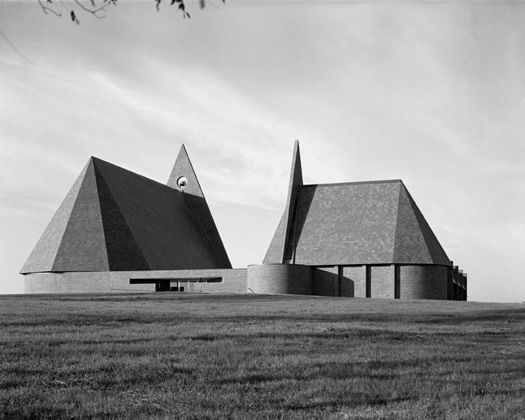

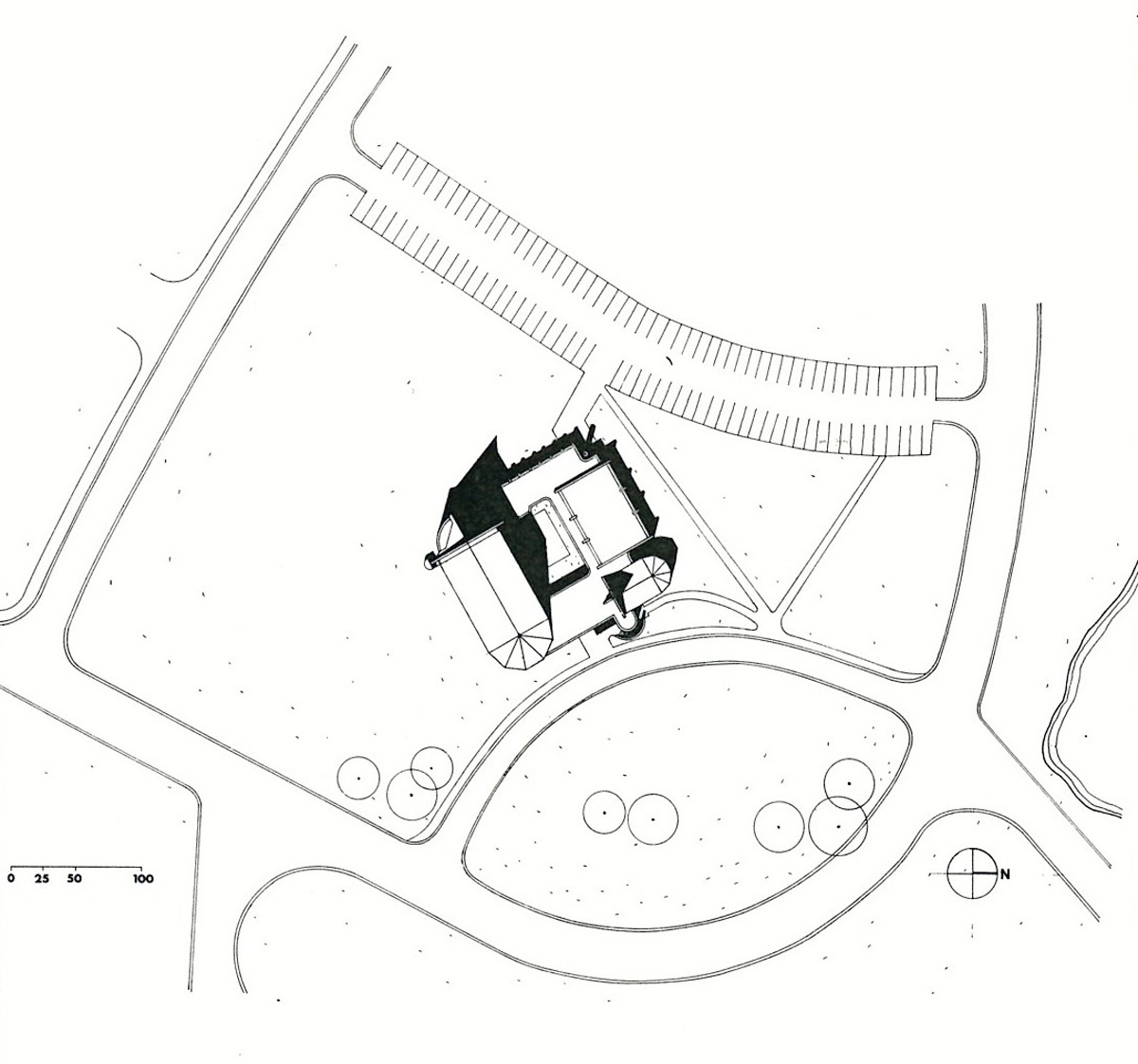
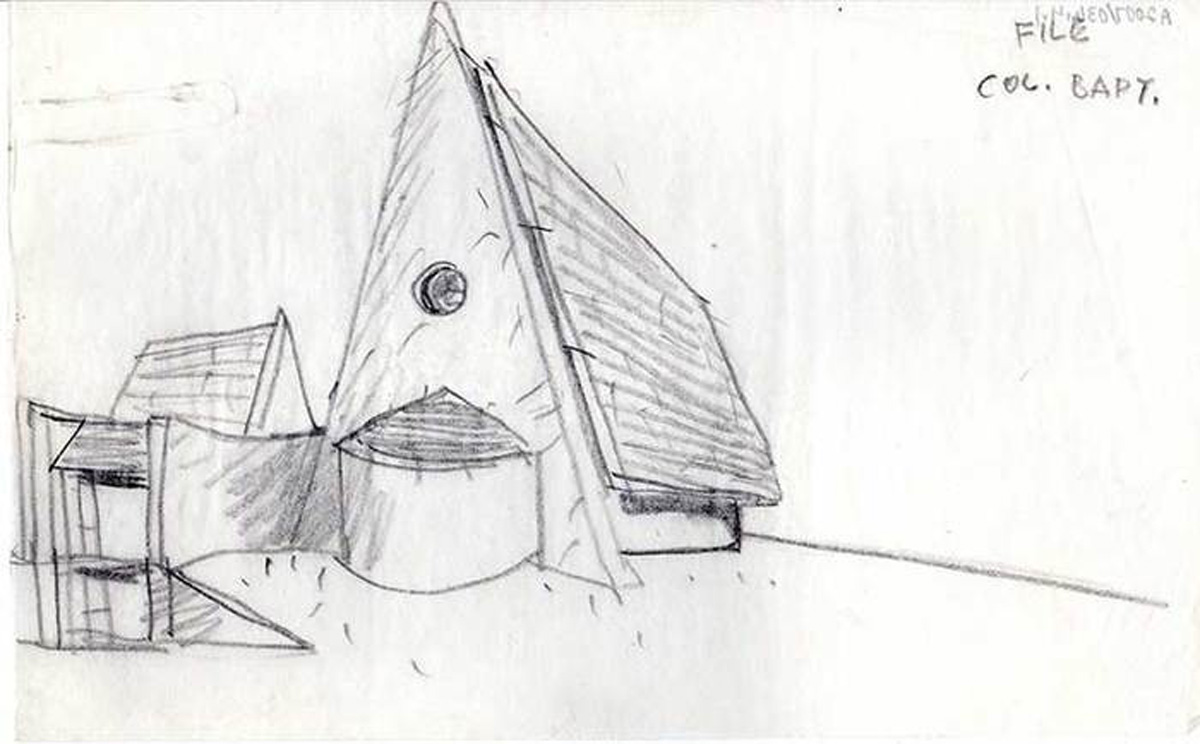
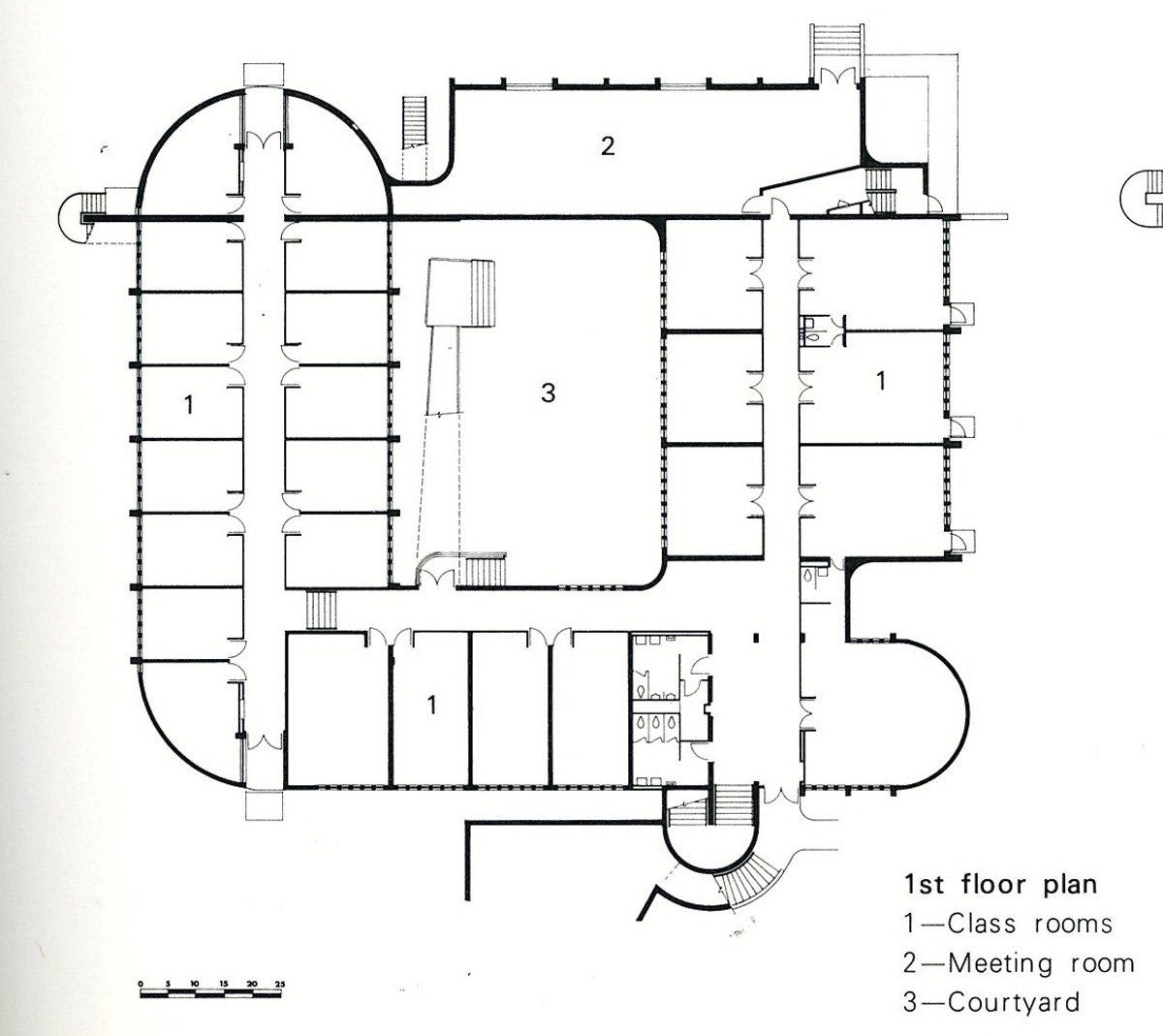
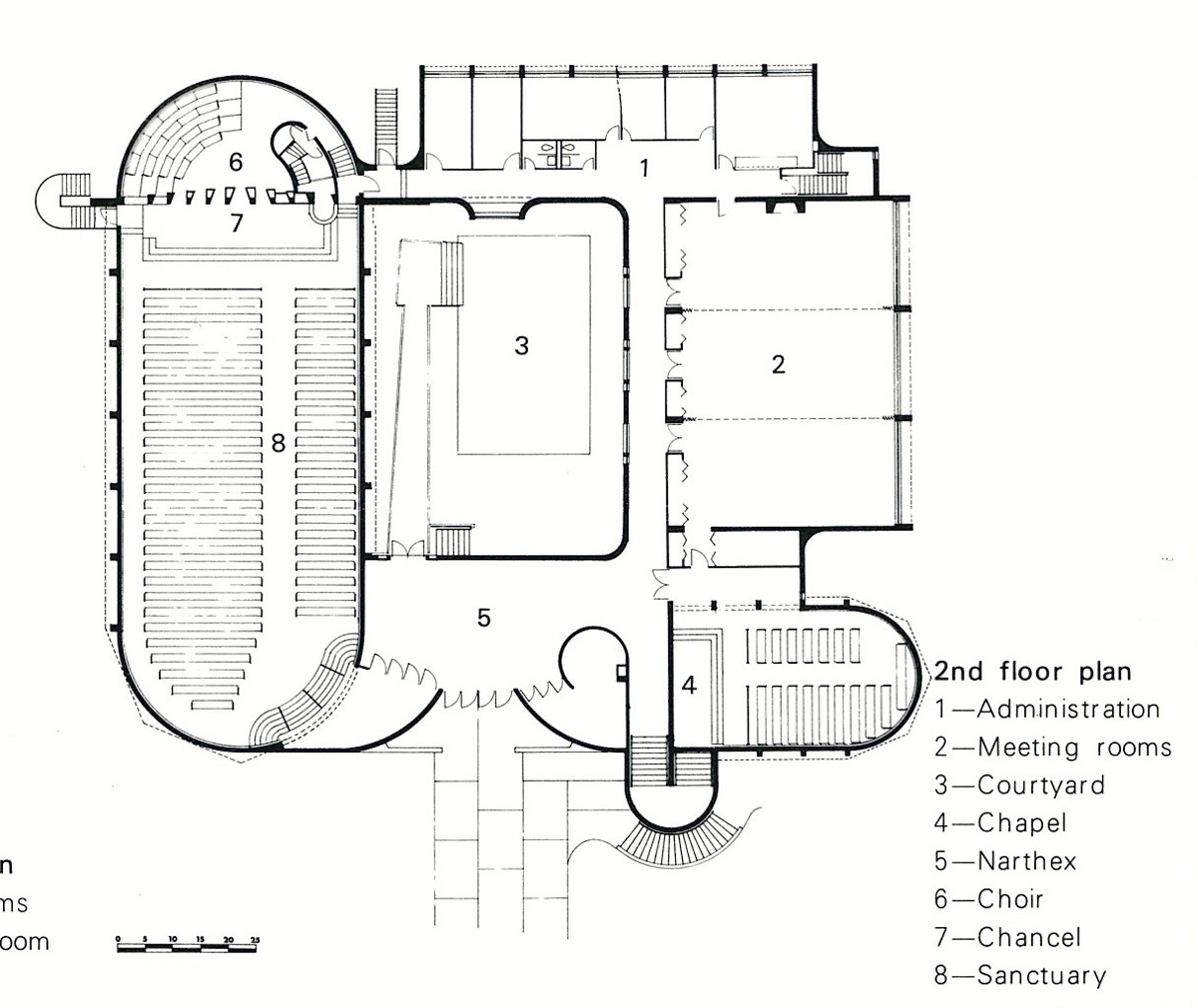

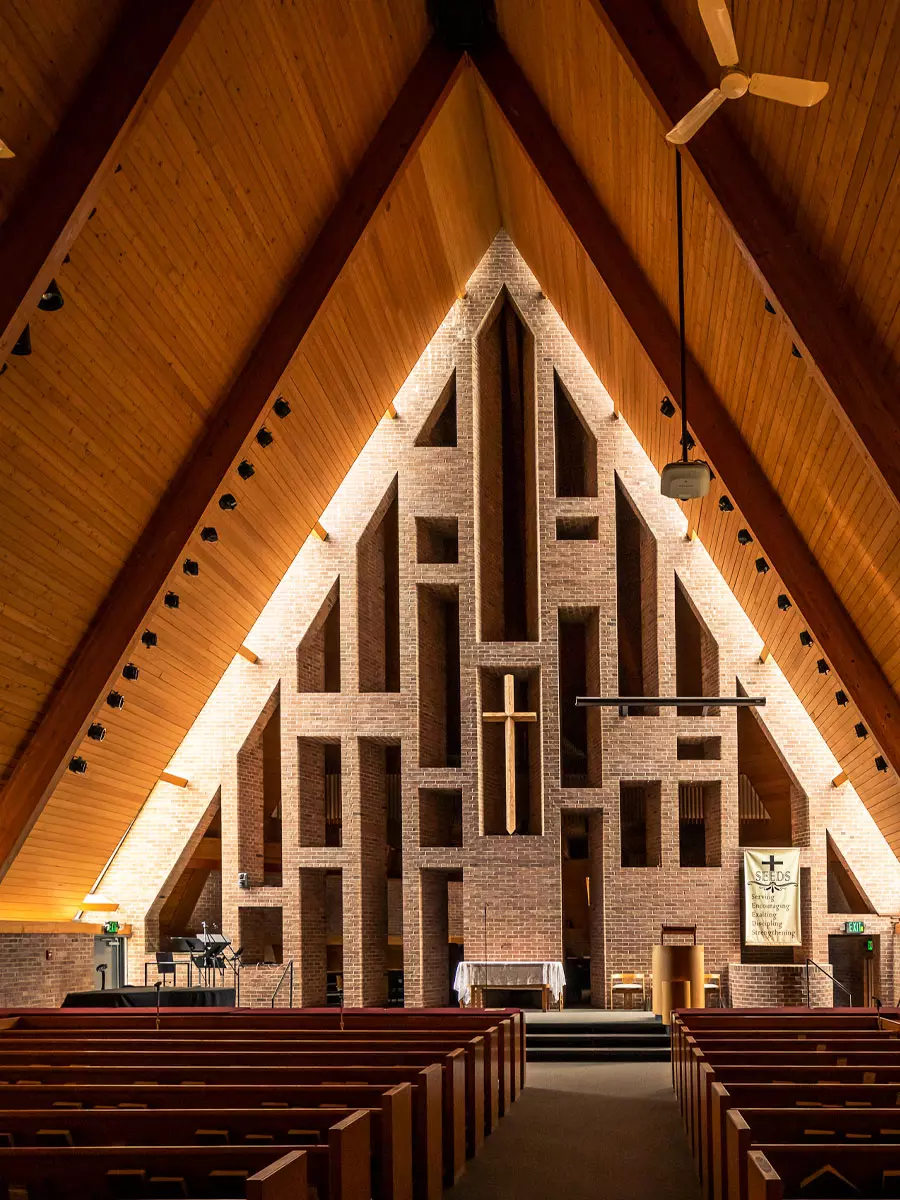

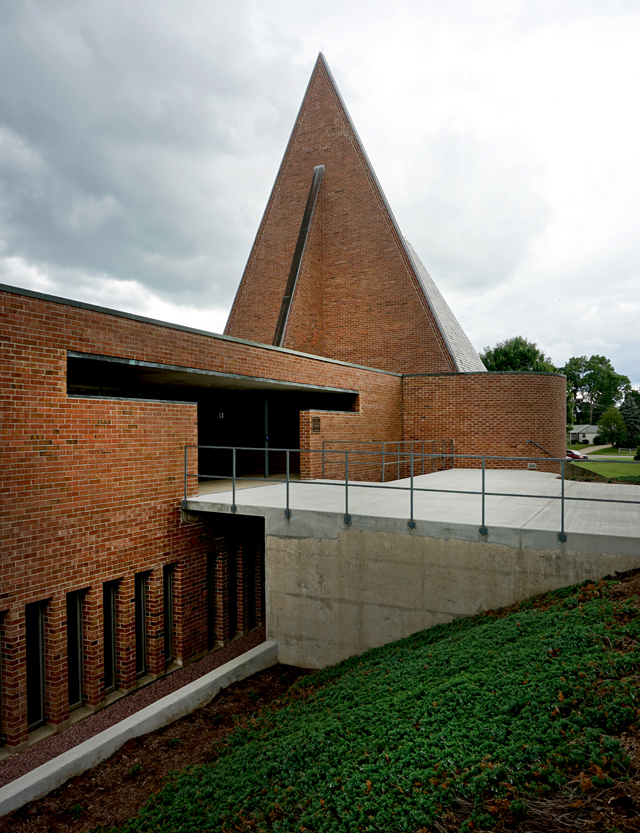
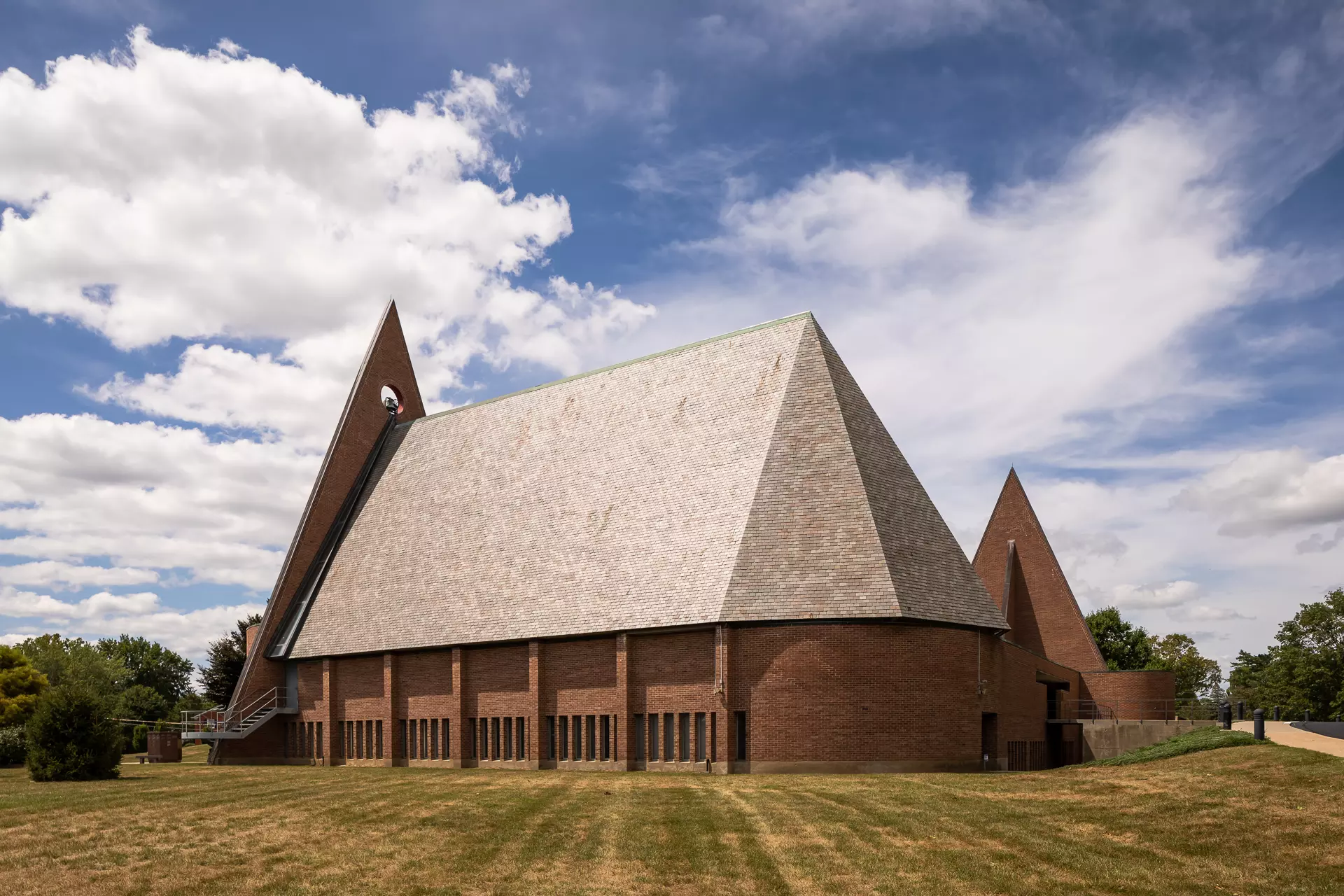
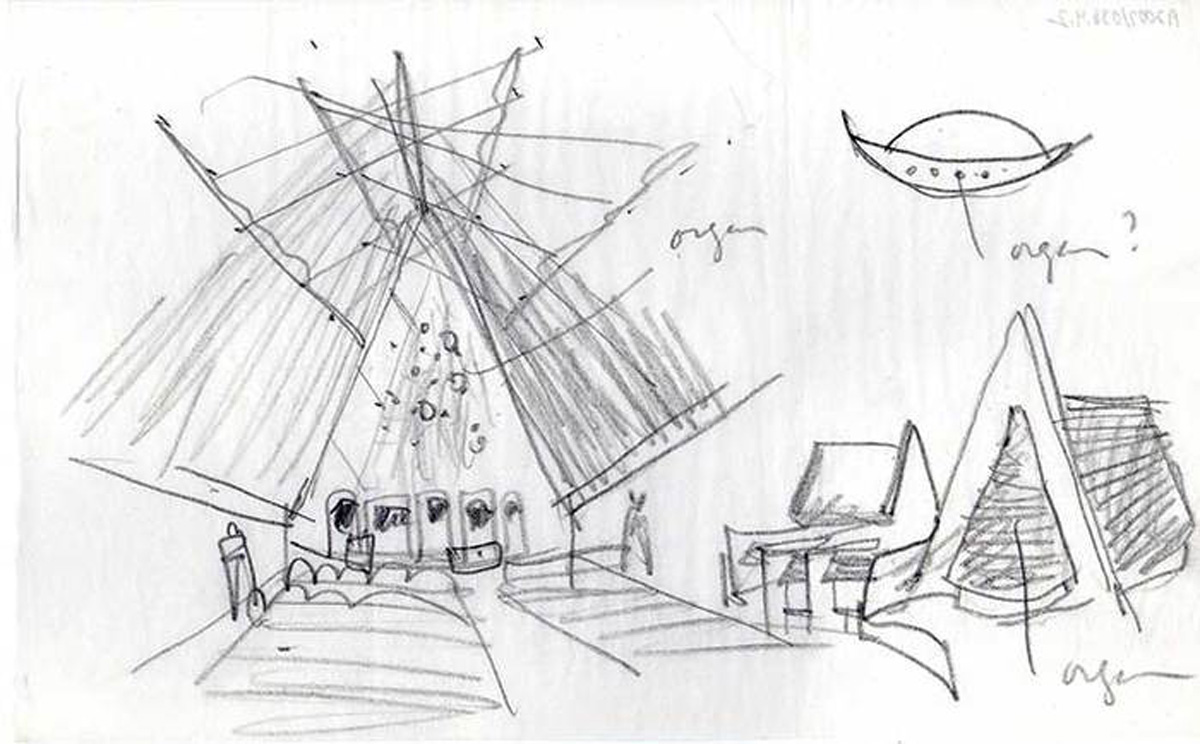
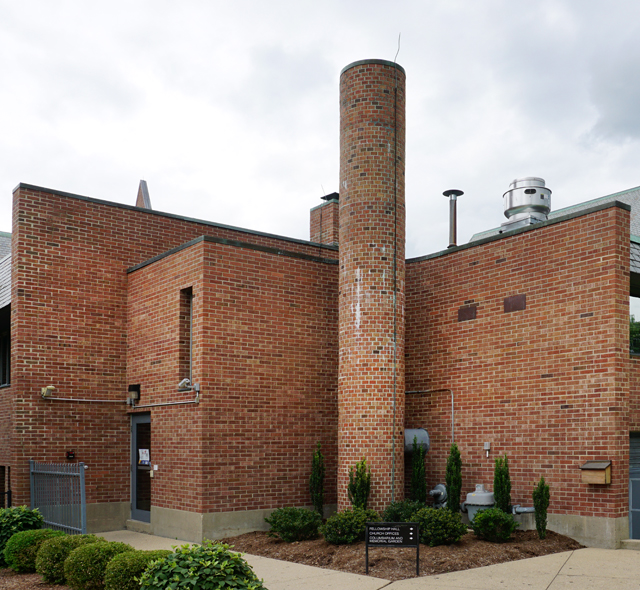
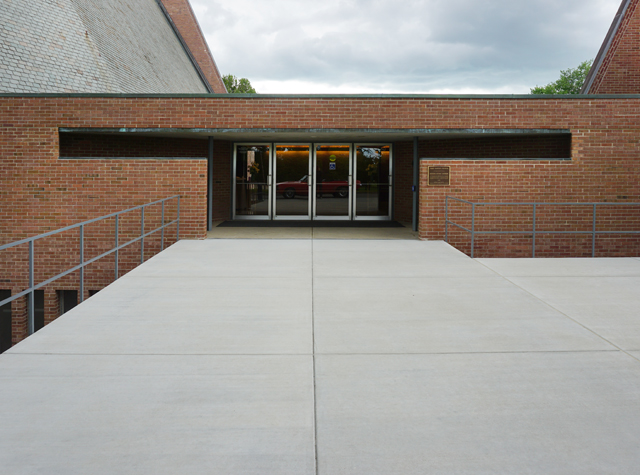






2 Comments
I will most certainly be publishing an article on the architecture of Harry Weese in Columbus, and this church s a knockout.. we did a conference about Harry’s work when I was director for the IU Center for Art+Design in Columbus (now the J. Irwin Miller Architecture Program)
Harry was a friend and sometimes collaborator on projects in Chicago. After visiting Columbus in the late ’70s, I told him how much I admired his First Baptist Church. But, why, I asked, did you place the center aisle off center and to the right? Because they are Baptists, he replied with laughter.